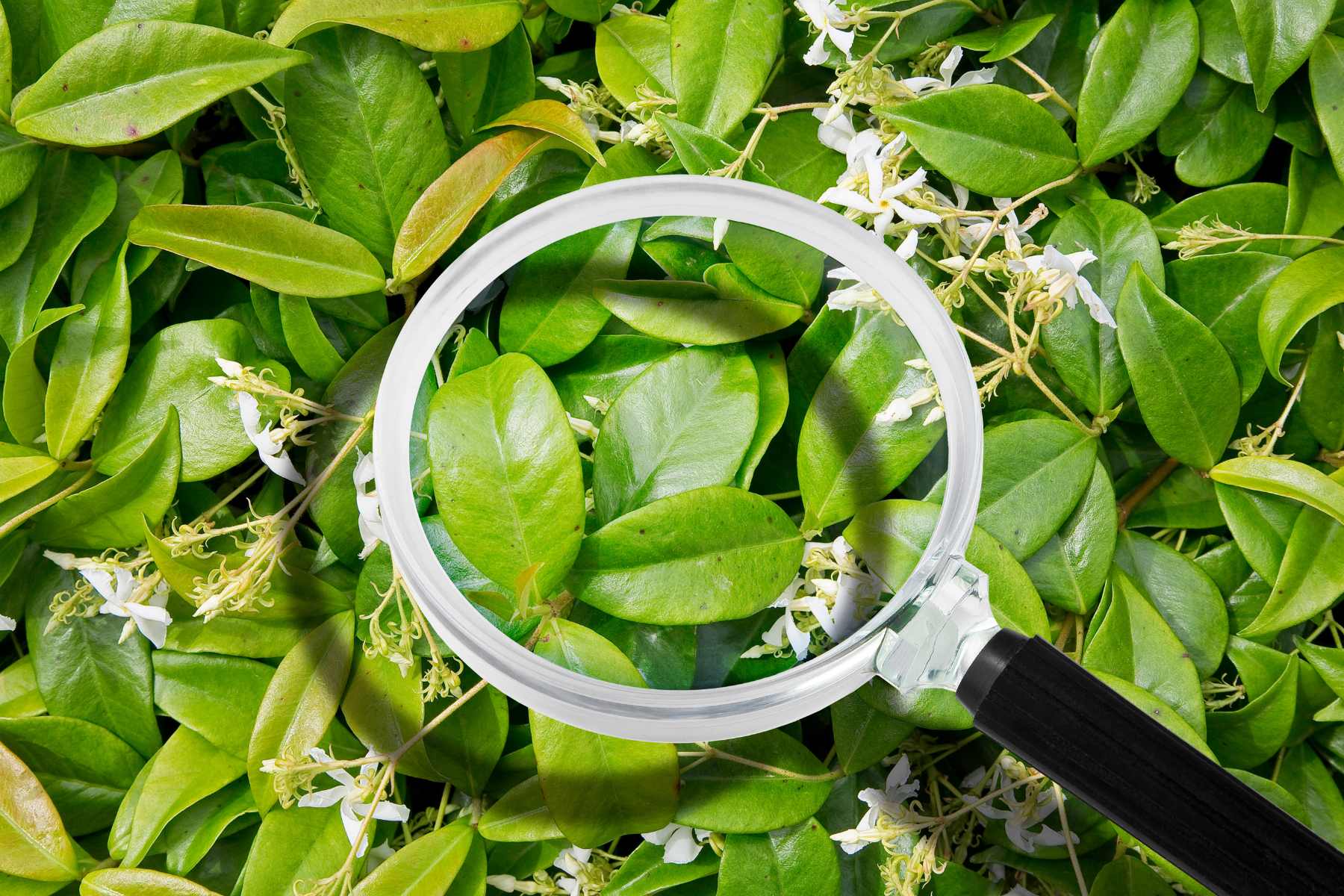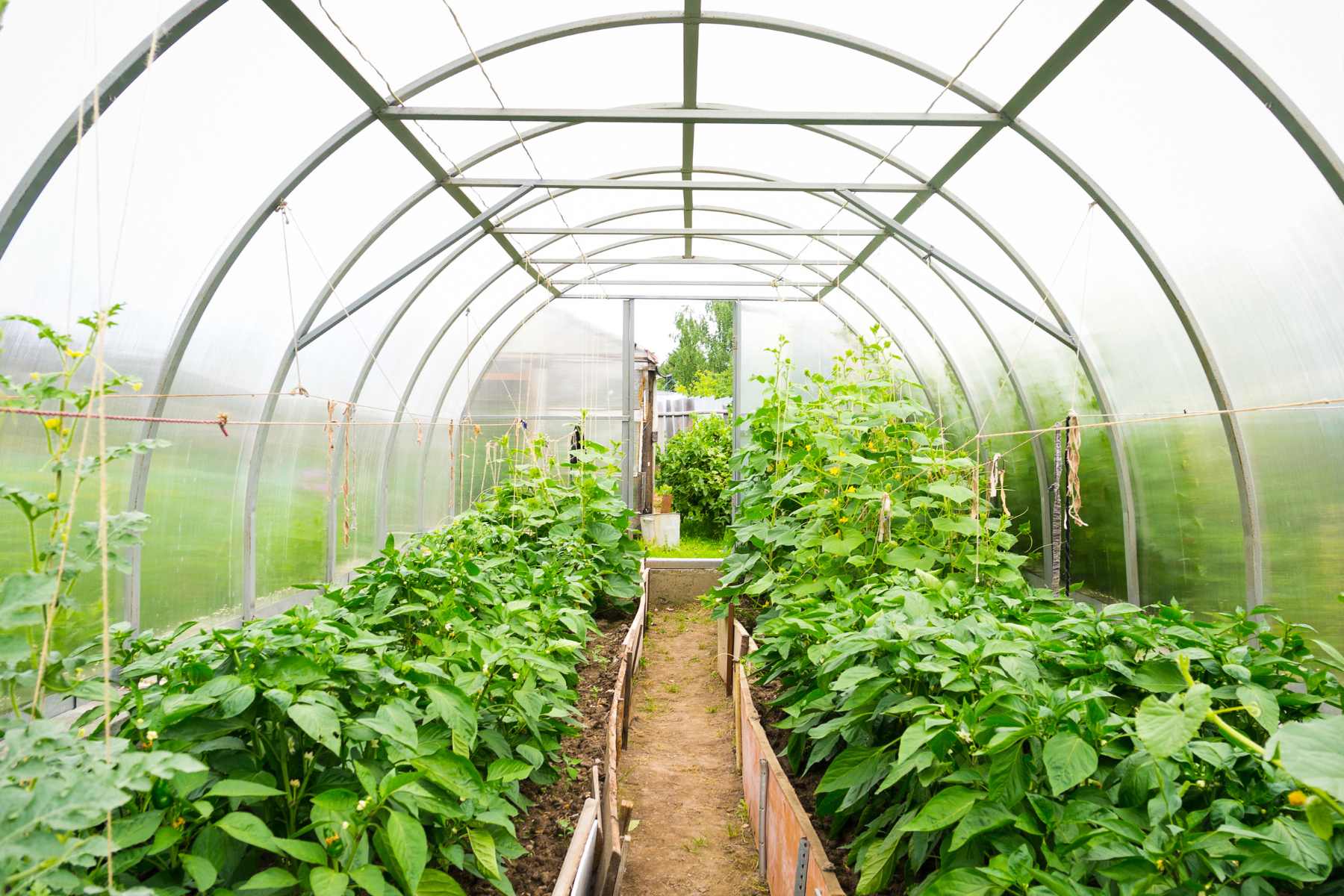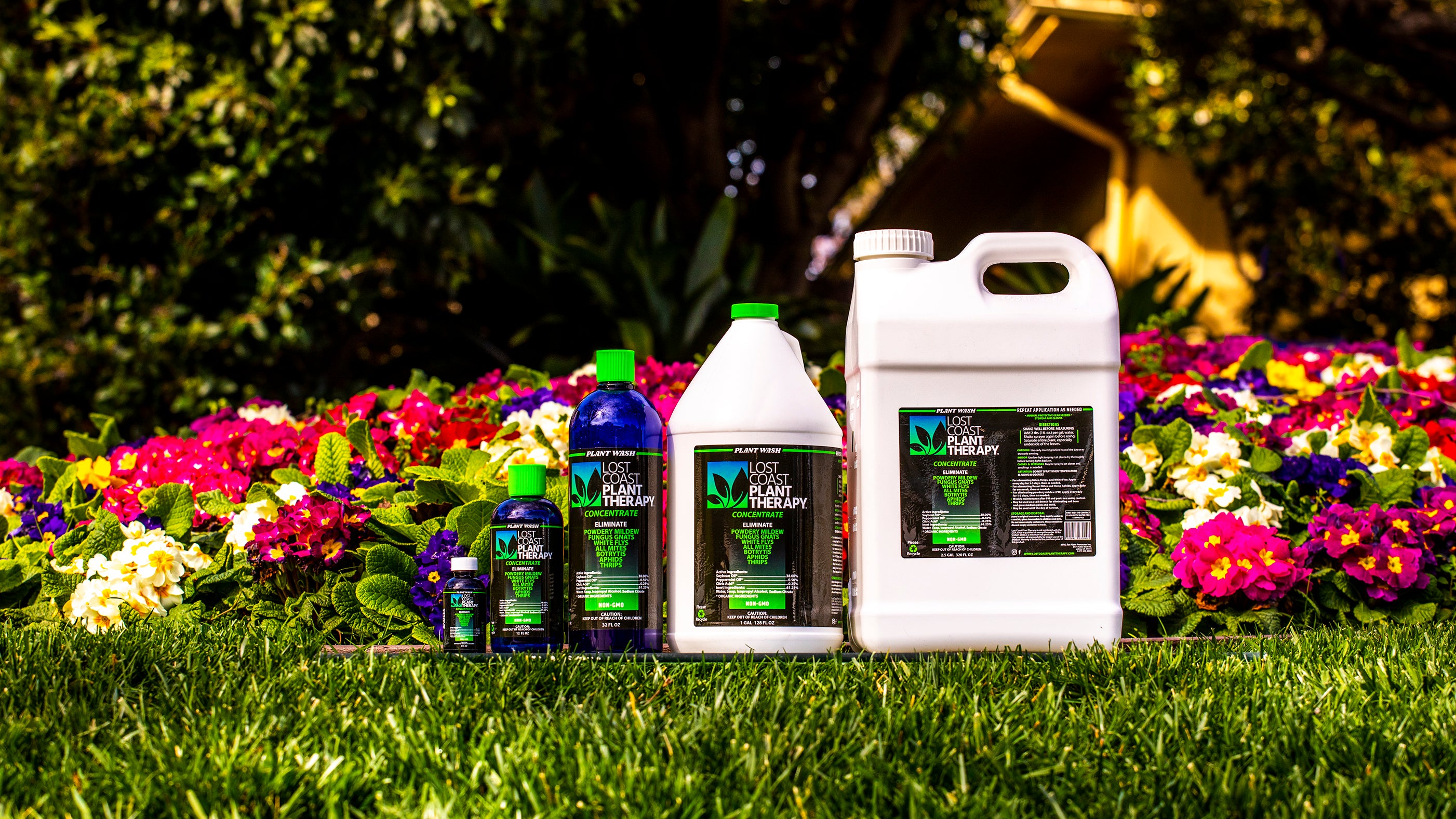If you've ever found yourself squinting at your plants, puzzled by the damaged leaves or the stunted growth of new buds and flowers, you might have been unwittingly hosting these tiny uninvited guests.
In this this guide, we'll equip you with knowledge and solutions as well as dive into effective ways to prevent and control russet mite infestations, emphasizing natural and organic methods that get rid of russet mites without harming the health of your garden.
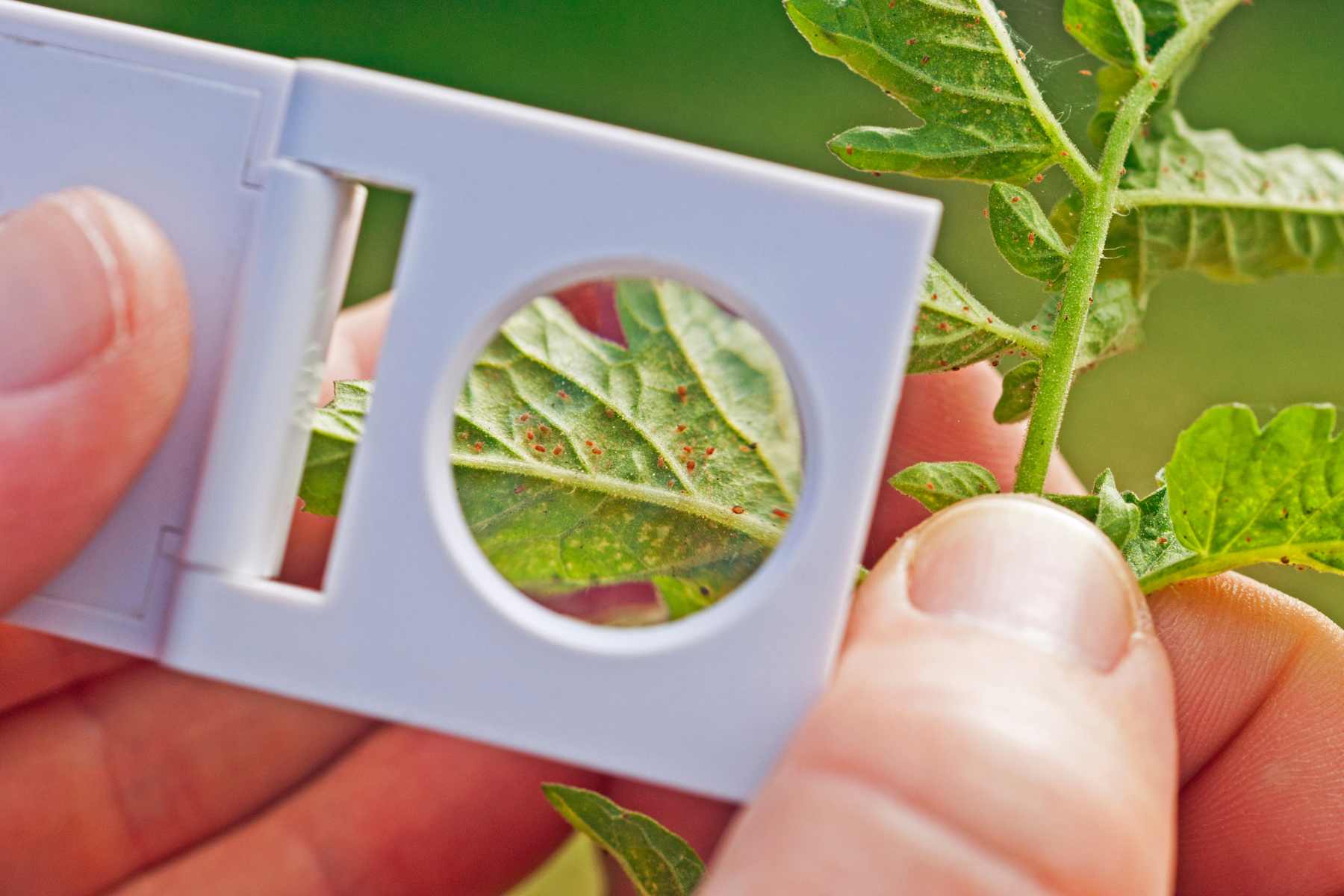
Understanding Russet Mites
Russet mites, members of the Eriophyidae family, are so small that spotting them without a magnifying glass or microscope is nearly impossible. Russet mites do not produce webbing like their spider mite cousins, making them even more challenging to detect until the damage is already significant.
Russet mites also differ in their preference for host plants. While they can affect a wide range of plants, they're particularly notorious for attacking hemp, tomatoes, and other solanaceous plants, causing the dreaded russet mite infestation that can devastate crops and ornamental plants alike.
Their life cycle is fascinatingly efficient. Female russet mites lay eggs on the host plant, and within days, these eggs hatch into nymphs that start feeding immediately, going through several stages before becoming adults. This cycle can occur very quickly, especially in warm conditions, allowing populations to explode in a short period.
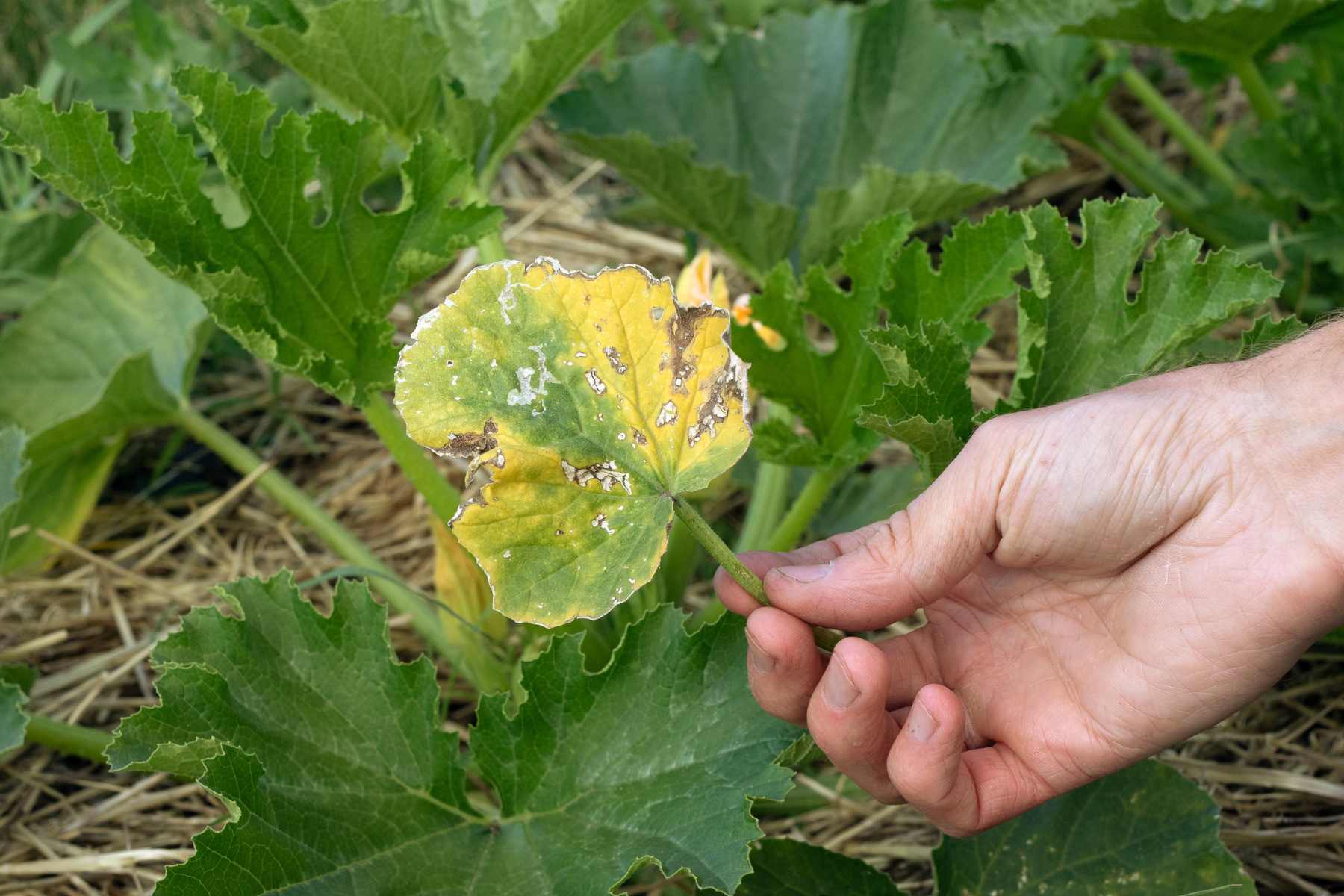
Signs of a Russet Mite Infestation
These mites are tiny, so we mainly need to look for the evidence they leave behind. The first sign that might catch your eye is the unusual appearance of your plants, flowers, and stems.
Russet mites target the tender, new growth of plants, sucking the sap and essentially the life out of them. This results in a range of symptoms that can include yellowing leaves, stunted growth, and a general appearance of the plant being under the weather. The leaves may start to curl and become brittle, and in severe cases, the plant might stop producing new growth altogether. Flowers can also be affected, with blooms looking lackluster or not appearing at all.
The stems of your plants can give away a russet mite infestation too. They might take on a bronzed or rusted appearance, hence the name "russet" mites. This is often one of the more definitive signs, especially in the case of tomato russet mites, where the stem damage is quite pronounced.
Early detection it crucial for managing these infestations. The longer russet mites are allowed to feast on your plants, the more damage they will do, and the harder it will become to bring your garden back to health. Catching the problem early means you can intervene before the mites spread too widely or cause irreparable harm. It's like catching a small leak before it becomes a flood – much easier to handle!
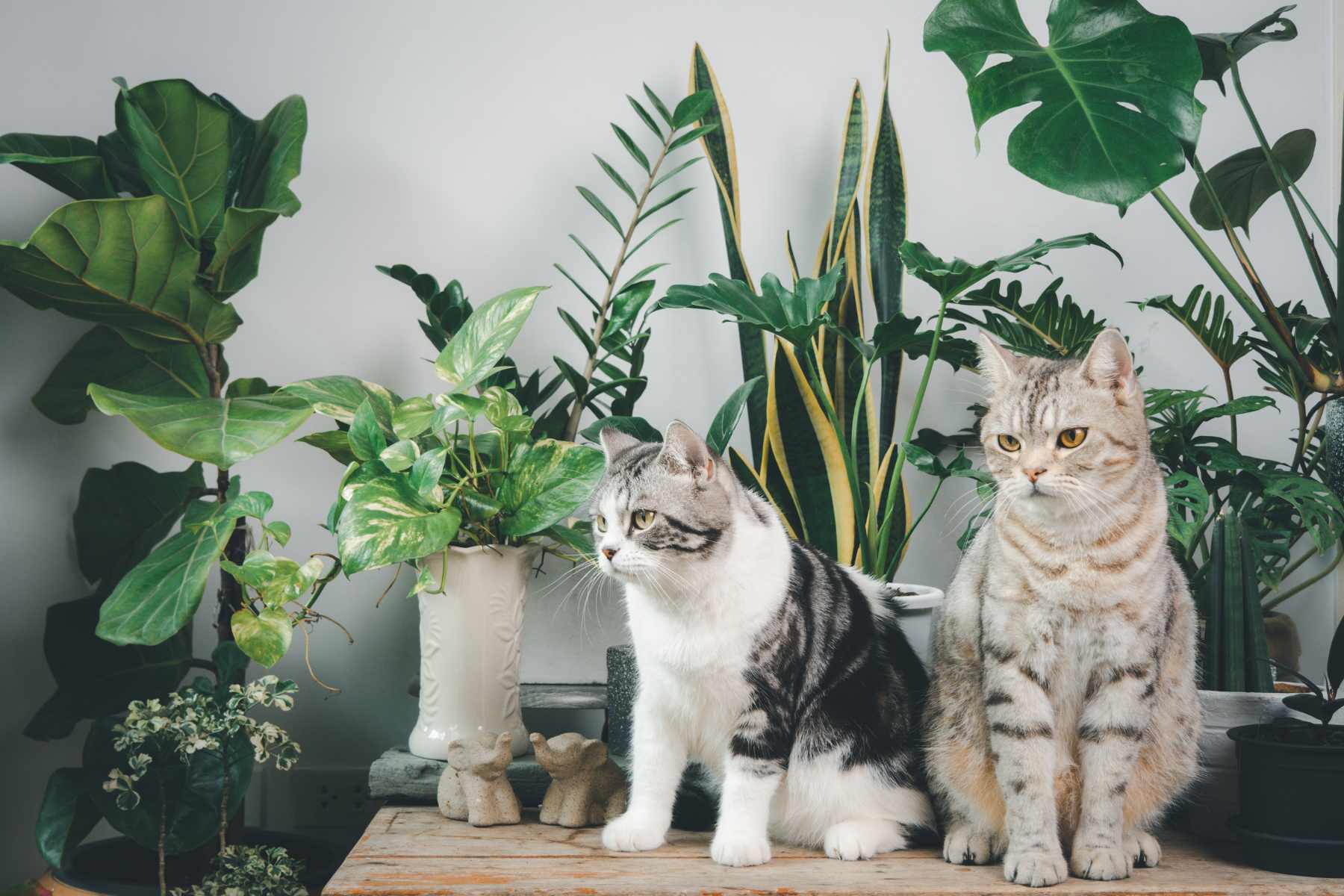
The Arrival of Russet Mites in Your Garden
You might be wondering how these tiny troublemakers find their way into your garden sanctuary in the first place. Russet mites are adept travelers, hitching rides on tools, clothing, pets, and even the wind. They're not picky about whether they settle in indoor or outdoor gardens, which means no plant is truly safe without the right precautions.
For indoor gardens, the introduction of new plants is a common vector. Outdoor gardens are susceptible to russet mites blowing in from neighboring gardens or wild areas, especially if the conditions are dry and windy.

Preventing Russet Mite Infestations
Creating an environment that discourages russet mites starts with good hygiene and garden management. Here’s how you can keep your garden clean and less inviting to pests:
Quarantine New Plants: New plants should be inspected and quarantined before joining the rest of your garden. If your new plants have russet mites, this simple step can prevent them from spreading to your other plants.
Remove Debris: Poor garden hygiene, such as not removing debris or infested plants, can provide them with the perfect conditions to settle in and multiply, both indoors and outdoors.
Promote Air Circulation: Good air circulation helps keep the foliage dry and less hospitable to mites.
Regular Monitoring: Regularly inspecting your plants, especially the new growth and the undersides of leaves, can help you spot signs of russet mites early on.
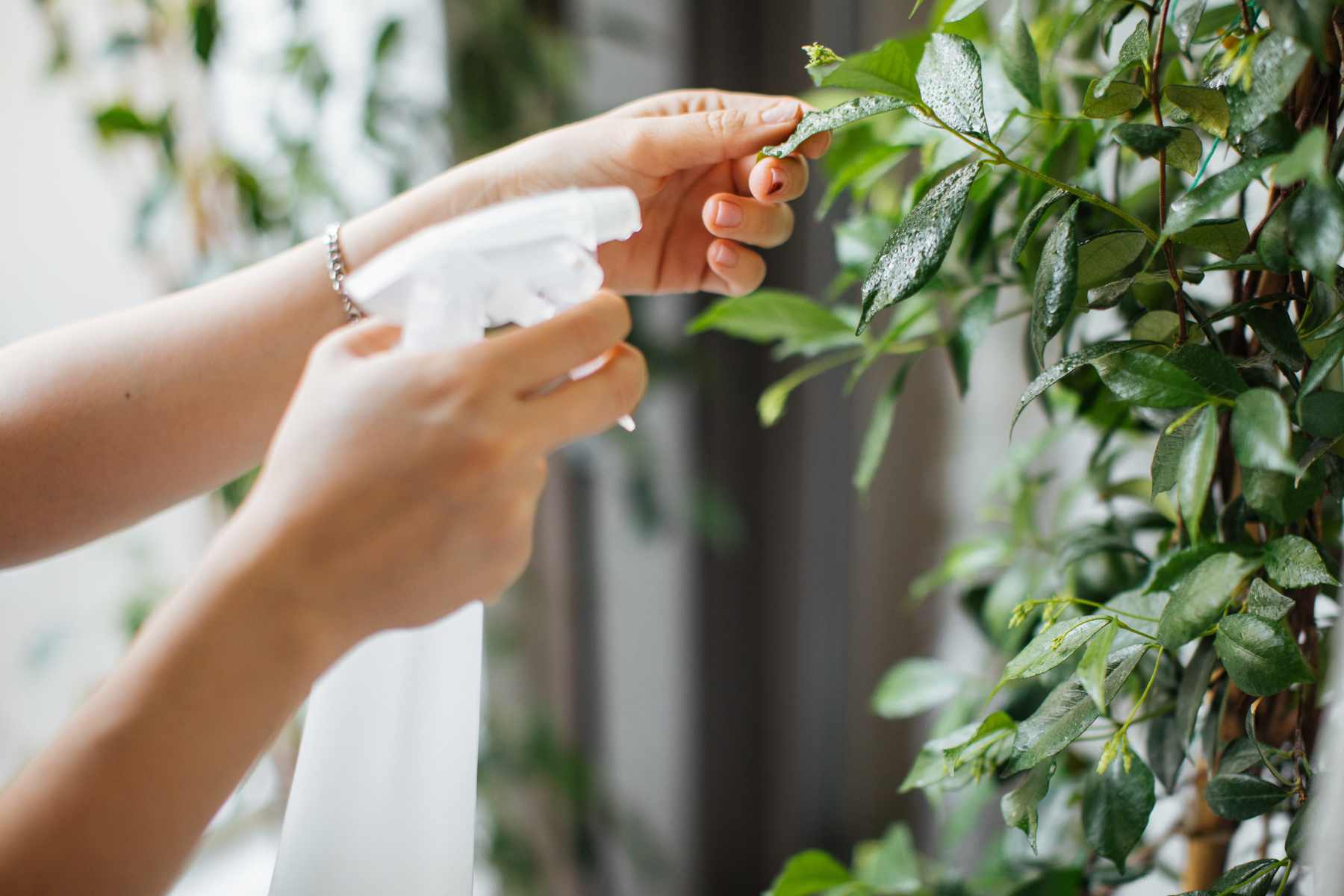
Apply Lost Coast Plant Therapy as A Preventative
Crafted with love and the utmost respect for nature, our Natural Plant Protector concentrate is designed to keep your garden clean and flourishing when used as directed. Made from food-grade soy oil, organic peppermint essential oil, and a dash of citric acid, this concoction is a superhero in a bottle. It gently wards off the pesky russet mites when used as directed, leaving your plants healthy and unharmed.
How to Apply Our Plant Wash for Russet Mite Control
Shake it Up: Start by giving your bottle of concentrate a good shake. This ensures all the ingredients are well mixed and ready to work their magic.
Mix it Right: In a clean sprayer, dilute the concentrate with water following the recommended ratio. For most cases, 2 tablespoons (or 1 ounce) per gallon of water will do the trick.
Cover Every Nook and Cranny: When spraying, your goal is to reach every part of the plant. Pay special attention to the undersides of leaves and the new growth where russet mites love to hide. It's like giving your plants a thorough shower, making sure not a single leaf goes unwashed.
Time it Well: The best time to apply Lost Coast Plant Therapy is early in the morning or late in the afternoon.
Repeat as Needed: Depending on the severity of the infestation, you might need more than one application. It's a gentle process when used as directed, so giving your plants multiple treatments is safe.
See more Instructions here.
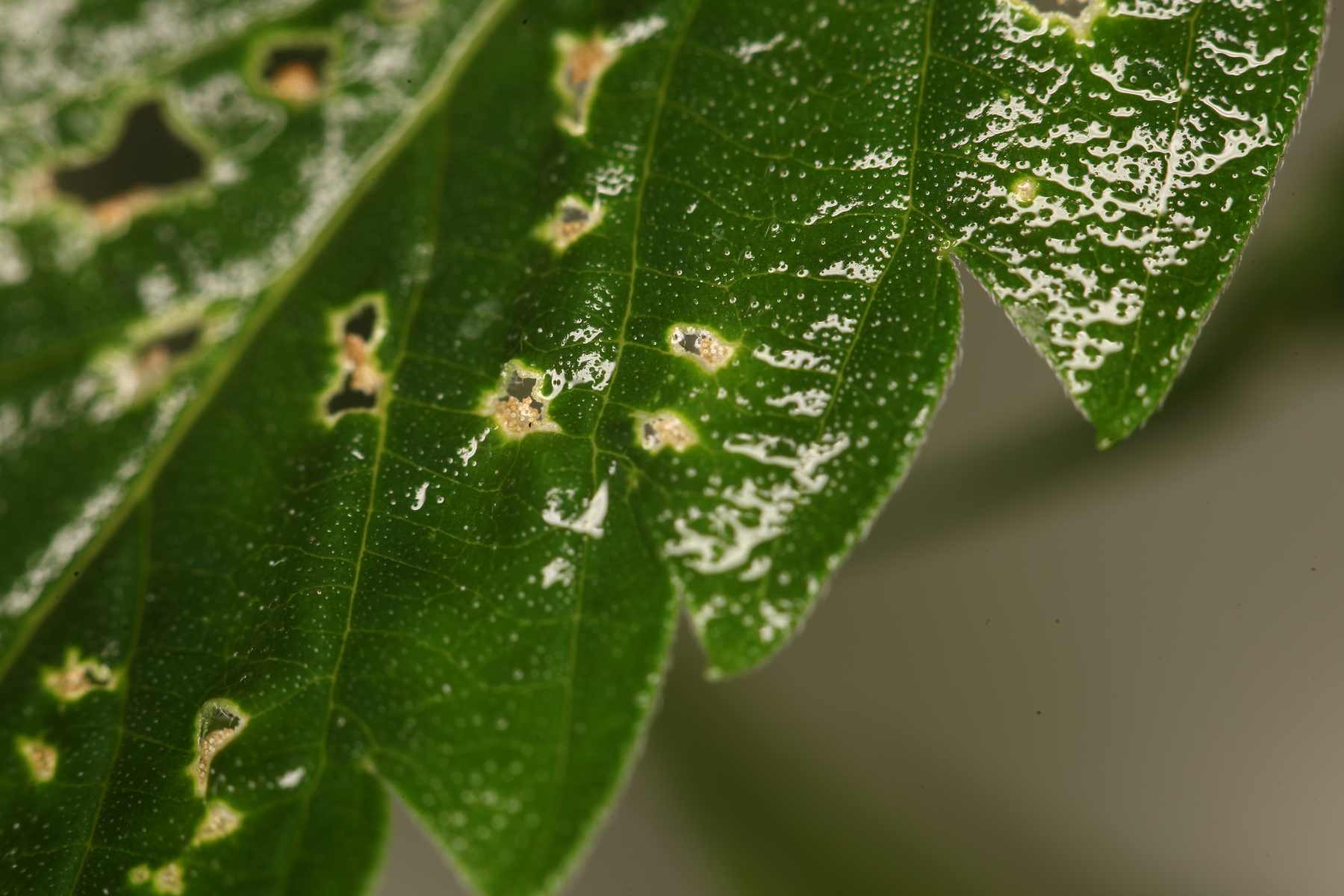
Maintaining Healthy Plants After Treatment
After you’ve shown those pests the door, the next step is to ensure they don’t find their way back. Keeping your garden healthy is not just about reacting to problems but preventing them from happening in the first place.
Ongoing Care Tips to Keep Plants Healthy and Prevent Future Infestations
Stay Vigilant: Regularly inspect your plants for early signs of distress.
Keep It Clean: Remove dead leaves and debris from your garden.
Water Wisely: Overwatering can create a breeding ground for pests and diseases. Water your plants at the base to keep leaves dry and less prone to issues.
Apply Lost Coast Plant Therapy: Incorporating our Natural Plant Wash into your regular gardening routine when used as directed can serve as a preventive measure, keeping potential pest issues at bay. Think of it as the regular health check-up for your plants, a way to keep them in peak condition. Even when pests are not visibly present, a light application every few weeks can act as a deterrent, keeping your plants robust against future invasions.
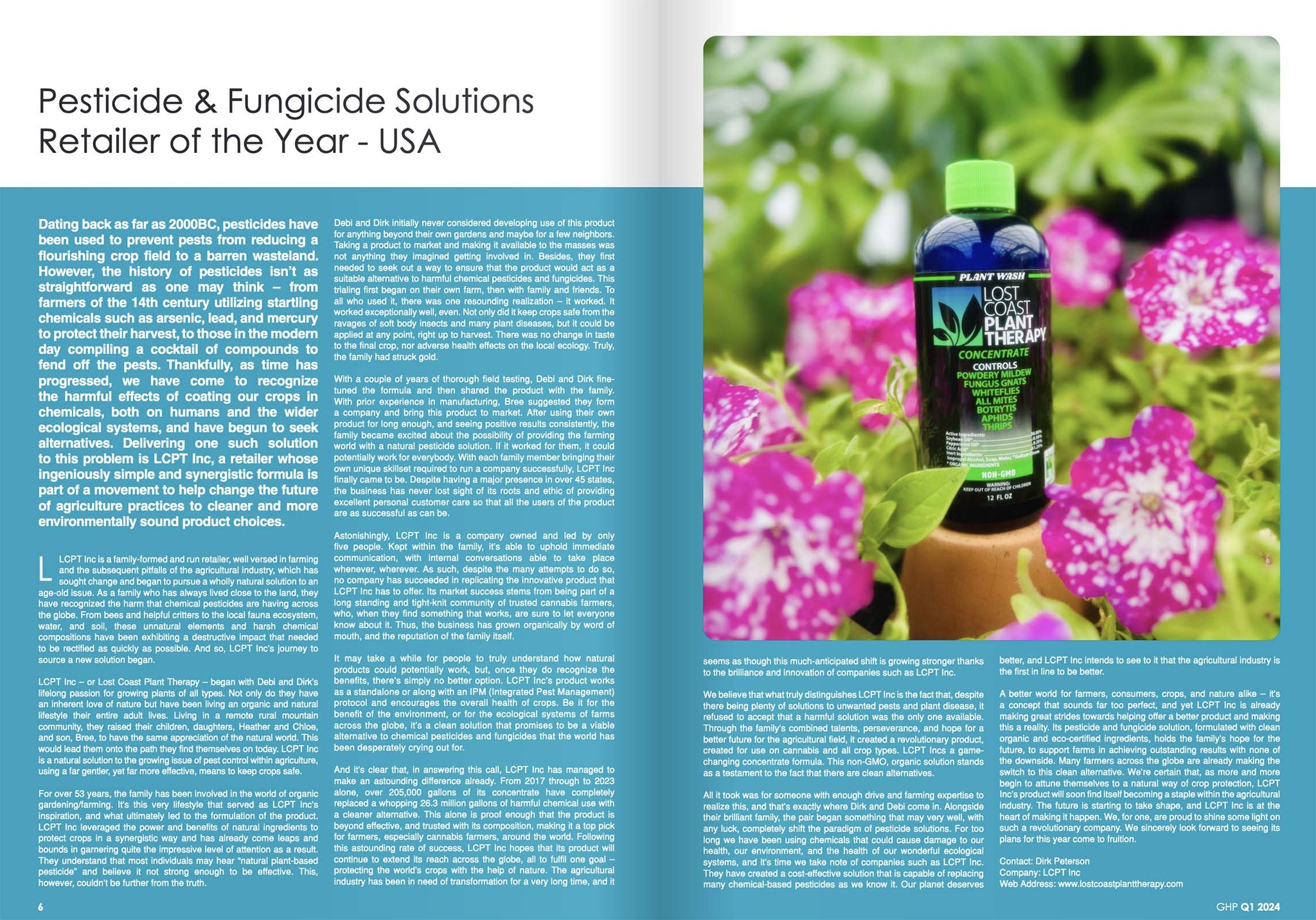
We were recently featured and recognized as the Best Pesticide & Fungicide Solution of the Year in the latest edition of Global Health & Pharma Magazine.
Conclusion
Navigating the world of garden pests can sometimes feel like an endless battle, especially when dealing with russet mites. Throughout this guide, we've explored the ins and outs of identifying, preventing, and treating russet mite infestations, emphasizing natural and sustainable practices and products. We've learned that these mites are very small, often requiring a hand lens to confirm their presence, and have delved into their preference for the tender new leaves and stems, underscoring the importance of early detection and intervention.
By embracing a holistic approach that includes regular inspections of plants infested areas, adopting cultural practices to discourage mites, and applying our Natural Plant Wash when used as directed, we can effectively prevent and control them. Treating russet mite infestations, from the early signs of aphid damage to the severe impact on bud and flower production, reinforces the need for vigilance and proactive care in our gardens.
Remember, the goal is not just to treat the current infestation but to prevent them all together. With the right knowledge and a bottle of our Natural Plant Protector used as directed, we can ensure our gardens remain places of beauty and abundance.

FAQ
What does russet mite damage look like on my plants?
Russet mite damage typically manifests as yellowing or bronzing at the base of the plant, progressing upwards. Affected leaves may curl and appear dry, and you might notice stunted growth in buds and new leaves. Since russet mites are very small, the damage is often visible before the mites themselves are detected.
Can mites be seen with the naked eye?
Mites, especially russet mites, cannot be seen with the naked eye due to their minuscule size. They have two pairs of legs and are often less than 0.2 mm long. Inspecting plants with a hand lens or microscope is usually required to confirm their presence.
How often should I apply Lost Coast Plant Therapy for russet mite control?
For active infestations, applying Lost Coast Plant Therapy three times in one week can significantly reduce mite populations. After the initial treatment, follow up with weekly applications until the infestation is under control. Always test on a small area first to ensure plant tolerance.
How can I prevent russet mites from infesting my garden?
Preventing russet mites involves regular garden maintenance, such as removing plant debris, monitoring for early signs of infestation, and applying Lost Coast Plant Therapy as a preventative when used as directed.
Can russet mites infect plants indoors?
Yes, russet mites, including hemp mites, can infest indoor plants. Regular inspection and cleanliness are vital to preventing indoor infestations. If you suspect an infestation, isolate affected plants and treat them promptly to prevent the mites from spreading to other indoor plants.
See more FAQ's here.


